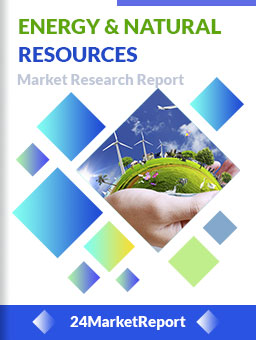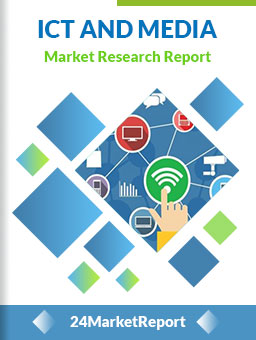
COMPANIES COVERED
Aquanova AGDownload FREE Report Sample
Download Free sampleNanoencapsulation is an advanced technology used to package nanoparticles of gas, liquid, or solid substances within a secondary material. The core material, also known as the active ingredient, can include bioactive compounds such as vitamins, drugs, biocides, and flavoring agents. The shell material, which can be composed of lipids, proteins, or polysaccharides, serves to protect the core from environmental degradation and control its release. In the food industry, nanoencapsulation enhances the stability, bioavailability, and controlled delivery of ingredients, thereby improving product quality and shelf life.
Market Size
The global nanoencapsulation for food products market was valued at USD 67 million in 2023 and is projected to reach USD 136.18 million by 2032, growing at a CAGR of 8.20% during the forecast period.
North America, a significant contributor to this market, accounted for USD 20.00 million in 2023 and is anticipated to expand at a CAGR of 7.03% from 2025 to 2032. The increasing demand for functional foods, fortified beverages, and nutraceuticals is driving the adoption of nanoencapsulation technology in the food sector.
Market Dynamics (Drivers, Restraints, Opportunities, and Challenges)
Drivers:
Growing consumer demand for functional foods and nutraceuticals
Enhanced bioavailability and controlled release of food ingredients
Advancements in nanotechnology and food science
Increasing investment in food processing innovations
Restraints:
High production costs associated with nanoencapsulation
Regulatory challenges and safety concerns related to nanoparticles in food
Limited consumer awareness about nanotechnology applications in food products
Opportunities:
Expansion in emerging markets with rising health-conscious populations
Development of eco-friendly and biodegradable encapsulation materials
Growing R&D initiatives for novel nanoencapsulation techniques
Challenges:
Compliance with stringent food safety regulations
Ethical concerns and public skepticism regarding nanotechnology in food
Need for industry-wide standardization in nanoencapsulation techniques
Regional Analysis
North America: The region dominates the market due to strong research and development initiatives, well-established food processing industries, and high consumer awareness about functional foods.
Europe: Stringent regulations surrounding food safety have slowed adoption rates, but advancements in food innovation continue to propel growth.
Asia-Pacific: Countries such as China, Japan, and India are witnessing significant growth due to increasing disposable income and demand for fortified food products.
South America: Growth is driven by increasing demand for food storage and packaging innovations.
Middle East & Africa: The region is gradually adopting nanoencapsulation technology, with a focus on food preservation and transportation.
Competitor Analysis
Key players in the nanoencapsulation for food products market include:
Aquanova AG: Specializes in liquid encapsulation technology.
Blue California: Focuses on natural ingredient nanoencapsulation.
Thies Technology: Develops innovative food-grade encapsulation solutions.
Frutarom Industries Ltd: Offers a wide range of encapsulated food ingredients.
Southwest Research Institute: Engages in research and development of nanoencapsulation solutions.
Market Segmentation (by Application)
Food Storage: Extends shelf life and preserves freshness.
Food Transportation: Protects perishable food items during transit.
Food Processing: Enhances ingredient stability and effectiveness.
Food Packaging: Provides controlled release and antimicrobial properties.
Others: Includes applications such as edible coatings and dietary supplements.
Market Segmentation (by Type)
Spray Congealing: Uses rapid cooling to solidify nanoencapsulated particles.
Fluid Bed Coating: Applies a protective layer to active ingredients.
Wax & Lipids Coatings: Offers moisture resistance and stability.
Melt Extrusion: Utilizes heat and pressure for encapsulation.
Others: Includes techniques such as nanoemulsions and coacervation.
Key Company
Aquanova AG
Blue California
Thies Technology
Frutarom Industries Ltd
Southwest Research Institute
Geographic Segmentation
North America: USA, Canada, Mexico
Europe: Germany, UK, France, Russia, Italy, Rest of Europe
Asia-Pacific: China, Japan, South Korea, India, Southeast Asia, Rest of Asia-Pacific
South America: Brazil, Argentina, Columbia, Rest of South America
Middle East & Africa: Saudi Arabia, UAE, Egypt, Nigeria, South Africa, Rest of MEA
FAQ Section
What is the current market size of Nanoencapsulation for Food Products?
The global market was valued at USD 67 million in 2023 and is expected to reach USD 136.18 million by 2032.
Which are the key companies operating in the Nanoencapsulation for Food Products market?
Leading players include Aquanova AG, Blue California, Thies Technology, Frutarom Industries Ltd, and Southwest Research Institute.
What are the key growth drivers in the Nanoencapsulation for Food Products market?
Increasing demand for functional foods, improved bioavailability of nutrients, and advancements in nanotechnology are major growth drivers.
Which regions dominate the Nanoencapsulation for Food Products market?
North America holds the largest market share, followed by Europe and Asia-Pacific.
What are the emerging trends in the Nanoencapsulation for Food Products market?
Development of biodegradable encapsulation materials, regulatory advancements, and increasing R&D investments are key emerging trends.
Key Benefits of This Market Research:

Speak to our Custom Research Team and get the Custom Research in a budget
Custom ResearchFrequently Asked Questions ?
A license granted to one user. Rules or conditions might be applied for e.g. the use of electric files (PDFs) or printings, depending on product.
A license granted to multiple users.
A license granted to a single business site/establishment.
A license granted to all employees within organisation access to the product.
Upto Working 24 to 48 hrs
Upto 72 hrs max - Weekends and Public Holidays
Online Payments with PayPal and CCavenue
Wire Transfer/Bank Transfer
Hard Copy




 Industry Market Size
Industry Market Size SWOT Analysis
SWOT Analysis Industry Major Players
Industry Major Players Revenue Forecasts
Revenue Forecasts Historical and Forecast Growth
Historical and Forecast Growth Profitability Analysis
Profitability Analysis
























